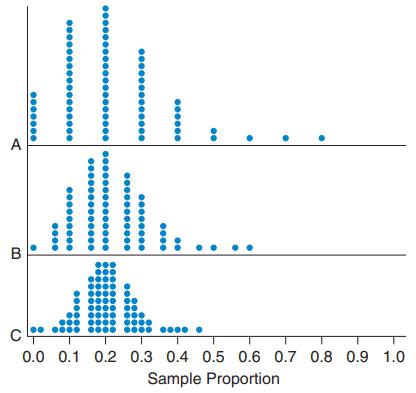A Zener deck of cards has cards that show one of five different shapes with equal representation,
Question:
A Zener deck of cards has cards that show one of five different shapes with equal representation, so that the probability of selecting any particular shape is 0.20. A card is selected randomly, and a person is asked to guess which card has been chosen. The graph below shows a computer simulation of experiments in which a “person” was asked to guess which card had been selected for a large number of trials. (If the person does not have ESP, then his or her proportion of successes should be about 0.20, give or take some amount.) Each dot in the dotplots represents the proportion of success for one person. For instance, the dot in Figure A farthest to the right represents a person with an 80% success rate. One dotplot represents an experiment in which each person had 10 trials; another shows 20 trials; and a third shows 40 trials.
Explain how you can tell, from the widths of the graphs, which has the largest sample (n = 40) and which has the smallest sample (n = 10).

Step by Step Answer:

Essential Statistics
ISBN: 9780134134406
2nd Edition
Authors: Robert Gould, Colleen N. Ryan, Rebecca Wong





